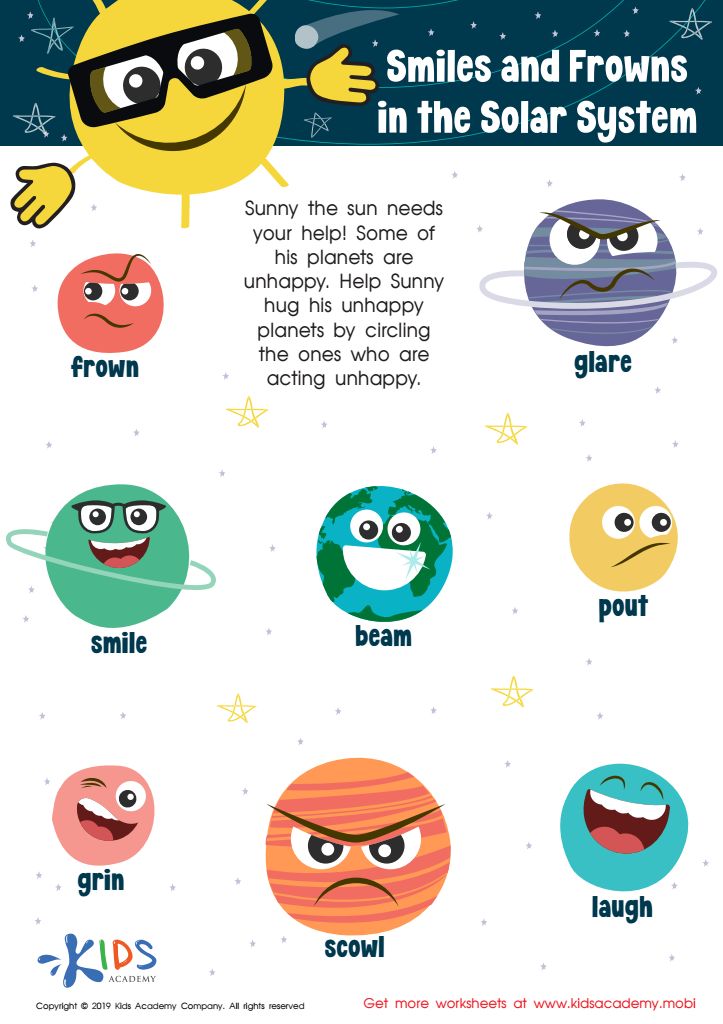Comparing planet sizes Worksheets for Kids
1 filtered results
-
From - To


Smile and Frowns in the Solar System Worksheet
Question/Answer
How to train the Comparing planet sizes skill in Preschool students learning about Building Vocabulary?
To train the "Comparing planet sizes" skill in preschool students learning about Building Vocabulary, introduce tangible, visual aids like inflatable planets or size-scaled balls. Engage the children in hands-on activities, sorting these models by size. Use descriptive vocabulary like "big," "small," "bigger than," and "smaller than" to facilitate comparisons, reinforcing language and concept understanding simultaneously.
Why is the Comparing planet sizes skill important for Preschool students?
The Comparing planet sizes skill is important for preschool students because it introduces basic concepts of comparison and measurement, stimulates curiosity about the solar system, and fosters early mathematical thinking. By engaging with these ideas, young children start to develop spatial awareness and understand the diversity of objects in space, laying a foundation for future scientific learning and observation skills.
What does the Comparing planet sizes skill mean when it comes to Preschool Building Vocabulary learning?
The "Comparing planet sizes" skill in the context of Preschool Building Vocabulary learning involves teaching young children to recognize and describe the relative sizes of different planets. This activity helps expand their vocabulary by introducing comparative words (like bigger, smaller, largest, smallest) and specific terms related to planets, thus enhancing their ability to compare and contrast objects in their environment.
 Assign to the classroom
Assign to the classroom











